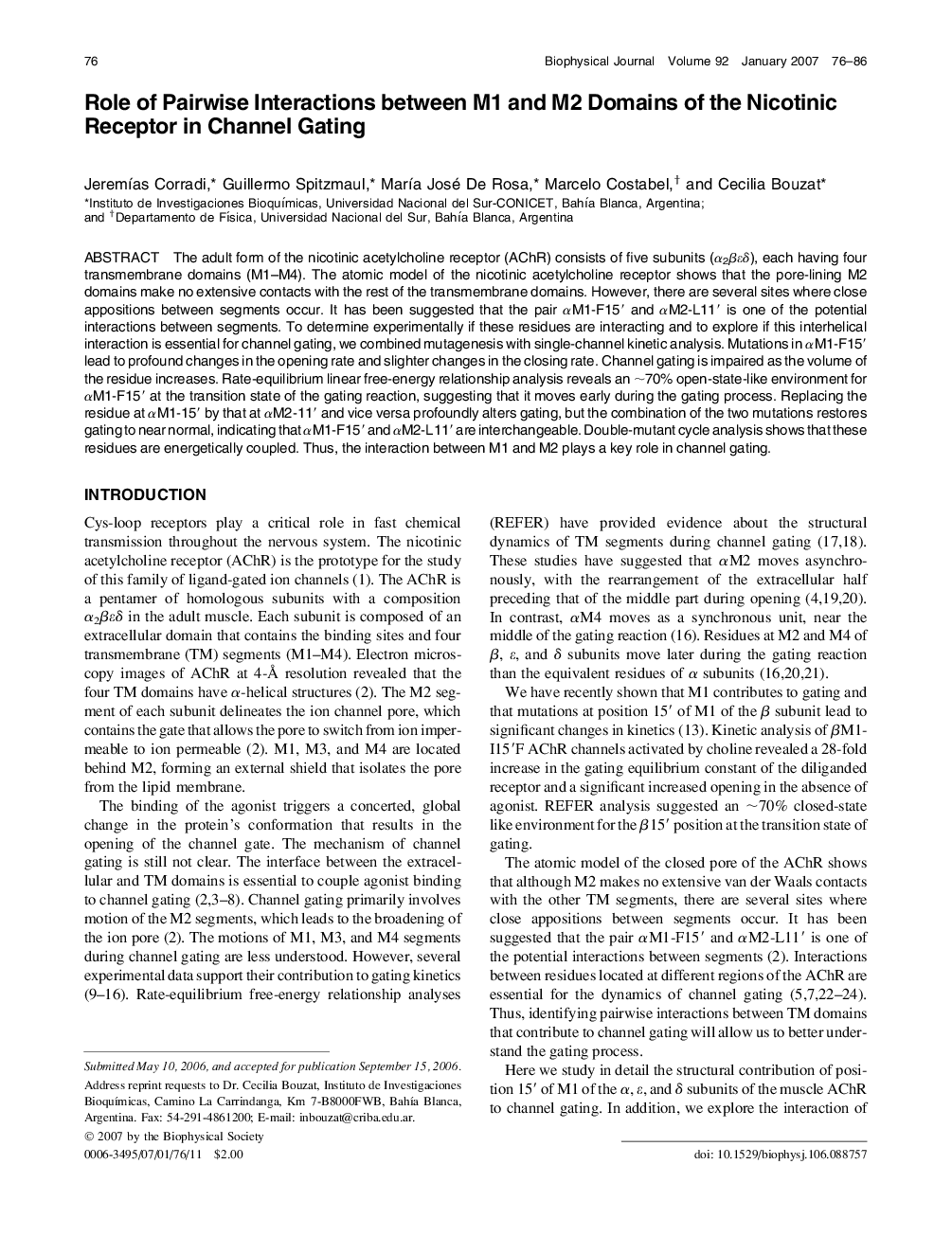| کد مقاله | کد نشریه | سال انتشار | مقاله انگلیسی | نسخه تمام متن |
|---|---|---|---|---|
| 1958246 | 1057905 | 2007 | 11 صفحه PDF | دانلود رایگان |

The adult form of the nicotinic acetylcholine receptor (AChR) consists of five subunits (α2βɛδ), each having four transmembrane domains (M1–M4). The atomic model of the nicotinic acetylcholine receptor shows that the pore-lining M2 domains make no extensive contacts with the rest of the transmembrane domains. However, there are several sites where close appositions between segments occur. It has been suggested that the pair αM1-F15′ and αM2-L11′ is one of the potential interactions between segments. To determine experimentally if these residues are interacting and to explore if this interhelical interaction is essential for channel gating, we combined mutagenesis with single-channel kinetic analysis. Mutations in αM1-F15′ lead to profound changes in the opening rate and slighter changes in the closing rate. Channel gating is impaired as the volume of the residue increases. Rate-equilibrium linear free-energy relationship analysis reveals an ∼70% open-state-like environment for αM1-F15′ at the transition state of the gating reaction, suggesting that it moves early during the gating process. Replacing the residue at αM1-15′ by that at αM2-11′ and vice versa profoundly alters gating, but the combination of the two mutations restores gating to near normal, indicating that αM1-F15′ and αM2-L11′ are interchangeable. Double-mutant cycle analysis shows that these residues are energetically coupled. Thus, the interaction between M1 and M2 plays a key role in channel gating.
Journal: - Volume 92, Issue 1, 1 January 2007, Pages 76–86